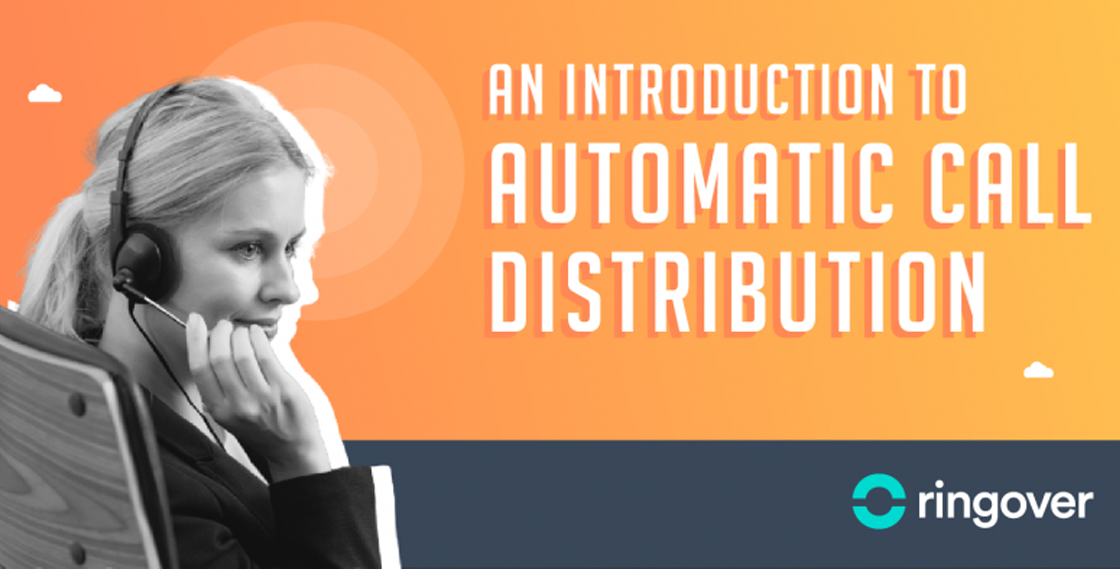Summary
What is an automatic call distributor (ACD)?
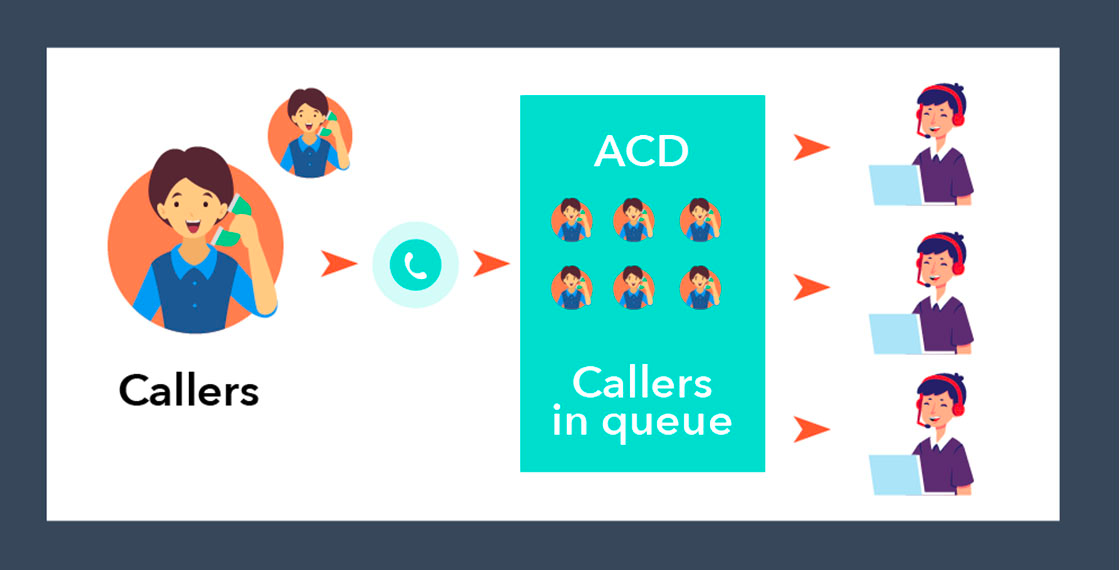
The Automatic Call Distributor (ACD) is a telecommunications technology that answers calls and routes them to specific departments or agents within an inbound call centre based on distribution rules. It streamlines communication, preventing the overloading of call systems and ensuring that callers don’t wind up in a permanent loop or queue too long, improving their overall experience. Most importantly, ACDs facilitate exchanges between consumers and the companies that provide the products and services they rely on every day. Although most people wouldn’t necessarily be able to define this term offhand, the vast majority of us have used (and yes, even benefitted!) from this system much more often than we realise. Most companies receiving hundreds or thousands of calls a day could simply not handle such call volume without putting some sort of filtering system in place - which is where the ACD comes in. It would mean that they'd also need hundreds or even thousands of agents manning the phones, and this just isn’t feasible! In fact, it wouldn't be inaccurate to say that call centres would not exist without the ACD - at least not in any form recognisable to today's consumers. Though the term call centre itself often carries a negative connotation - conjuring associations with pesky telemarketers, endless transfers from department to department and hold music that loops ad infinitum - the truth is that they are necessary, for better or for worse, as is the technology that makes them tick. In the following article, we'll attempt to shed some light on this very behind-the-scenes yet indispensable aspect of the call centre, and show you how your organisation can take advantage of Ringover's solution to launch your sales and customer service to the next level. This mainly highlights :
Wait, so isn’t an ACD just an IVR then?
The main difference between an ACD and an IVR (Interactive Voice Response) server is that IVRs are designed to route calls or provide information based on caller selections, without requiring the intervention of an operator ("press 1 for sales, 2 for support, or 3 for billing"). Callers are also often able to perform such tasks as paying bills, retrieving passcodes or updating personal information through an IVR. ACD distribution is based on rules that have been pre-defined according to the company's specific setup or requirements. For example, calls coming in after hours or during holidays are automatically sent to voicemail, while calls from numbers with certain prefixes may be routed to agents able to assist callers in certain languages or having familiarity with a particular region. The differences between the two do not mean, however, that IVRs and ACDs are mutually exclusive! In fact, today's advances in cloud telecom allow these technologies to be frequently paired. A caller's IVR selections can make ACD rules kick in, and an ACD can be set up to funnel certain types of calls to an IVR. Cutting out the middleman, if you will, in terms of hardware costs and configuration also means that both are easier than ever to put in place, so more and more companies are now enjoying the best of both worlds.
A short history
Various incarnations of the ACD have existed since the 1950s, when PBX devices routed calls based on the principles of switchboard operation. It first came into systematic use in the mid-1970s with the arrival of the Rockwell Galaxy Automatic Call Distributor, which implemented technology based on a system patented by Robert Hirvela. Continental Airlines put the Rockwell ACD in place in 1973 and continued to do so for over 20 years.
So how does ACD really work?
Let's say you want to arrange to have someone come out to fix your satellite TV service. You could likely do this online by sending the company an email or filling out and submitting an online form, but since you prefer to have instant confirmation from a live human being, you decide to call your service provider, which employs several hundred people across a wide geographic area. Now picture your phone call as a train car, and your outgoing phone line as a stretch of railroad. Your call will run along a length of track between the stop where you get on board (by dialling the number) and your final stop (a customer service representative who can schedule an appointment for you). In this scenario, the ACD is Grand Central Station. All trains travelling on the lines running through it will be sent in one direction or another based on criteria such as caller location (to be preferentially routed to agents speaking the same language or in the same time zone) or IVR selection, to be prompted onward to next steps. Pre-set distribution (aka routing) rules act as rail switches, putting trains carrying VIPs onto fast tracks or routing them directly to their agent of choice, sending the longest queuing folks to the front of the line, or teleporting newcomers to overflow call centres in Glasgow, Houston or Mumbai. As for travellers arriving after all station masters have already gone home, they'll be put up for the night (voicemail or call-back request)! But enough with the metaphors already: we're sure you get the picture! CTI (Computer Telephony Integration), which links a company's telecom to a CRM or helpdesk, allows the ACD to be taken a step further. ANI (Automatic Number Identification) similar to Caller ID allows incoming calls to be synced with caller information already in the company's computer system. This is extremely useful in that it allows the system to recognise calls from high-priority clients and send them to their account manager's direct line without further delay, or open the client's file right on the computer screen of the agent taking the call. DNIS (Dialled Number Identification Service) routes calls to one department or another based on the exact number dialled - tech support, customer service, etc. This prevents salespeople from having to constantly transfer people with billing or support questions to the correct departments, and vice-versa.
Here are some of the most common types of incoming call distribution:
1. Fixed
Calls are routed directly to a specific group of agents, (aka "hunt groups") having a particular skillset (language, technical expertise, etc.) in the same order every time. Incoming calls will ring each time to the first person in the group, and if their line is busy, to the next, and so on.
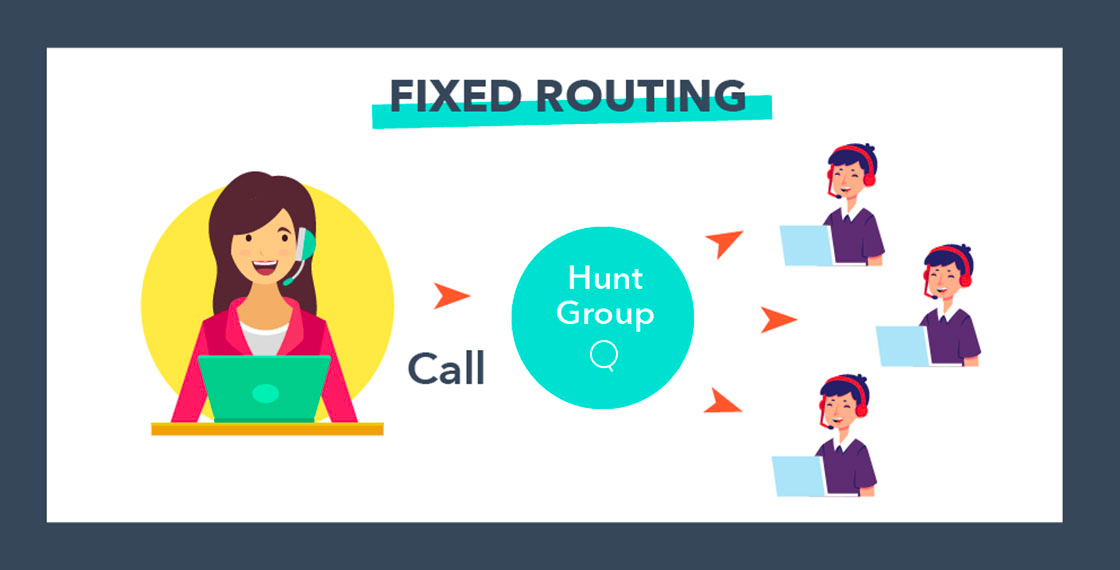
2. Round-robin
With Round-robin call distribution, calls are routed in a loop for more even distribution; in other words, only once the last agent has taken a call will the next incoming call go to the first agent on the list, restarting the cycle.
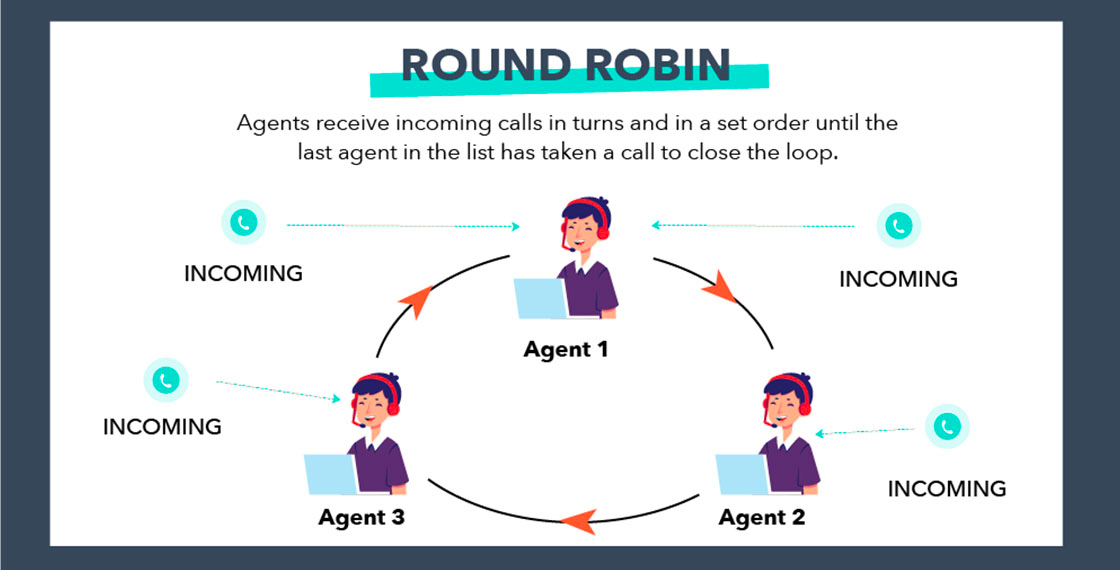
3. Least active
Calls ring each time to the agent who has been idle the longest, so that no single agent receives more or fewer than his or her fair share of calls.
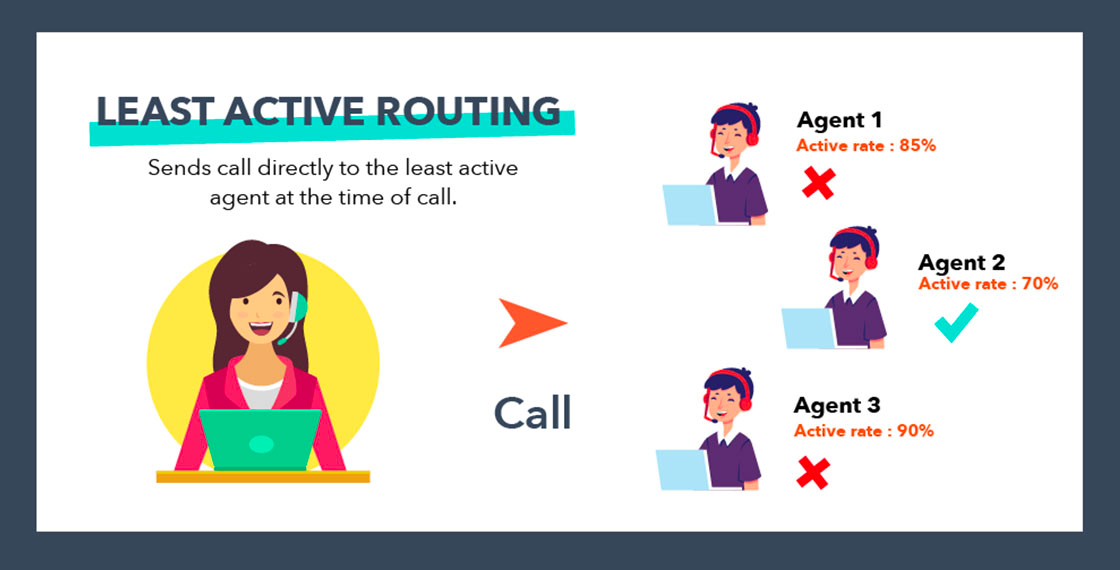
4. Time-based
Incoming calls ring in pre-set order to a group of agents having marked themselves as available for a given time period. For example, on Tuesday morning callers may be routed to Tom, Jenny, and Marcela in that order, while afternoon callers will be routed to Tom, Marcela and George, since Jenny will be busy running a training seminar, and George will not arrive until after lunch. There are a lot of time-based routings.
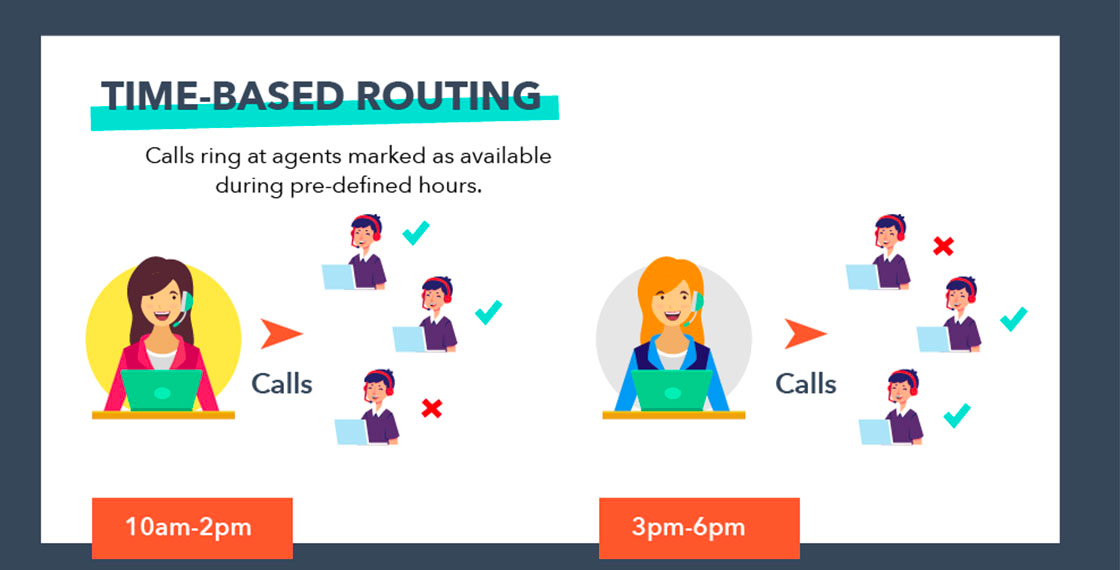
5. Simultaneous
Calls ring to all available agents at once, so the one who handles the call is simply the first to pick up each time.
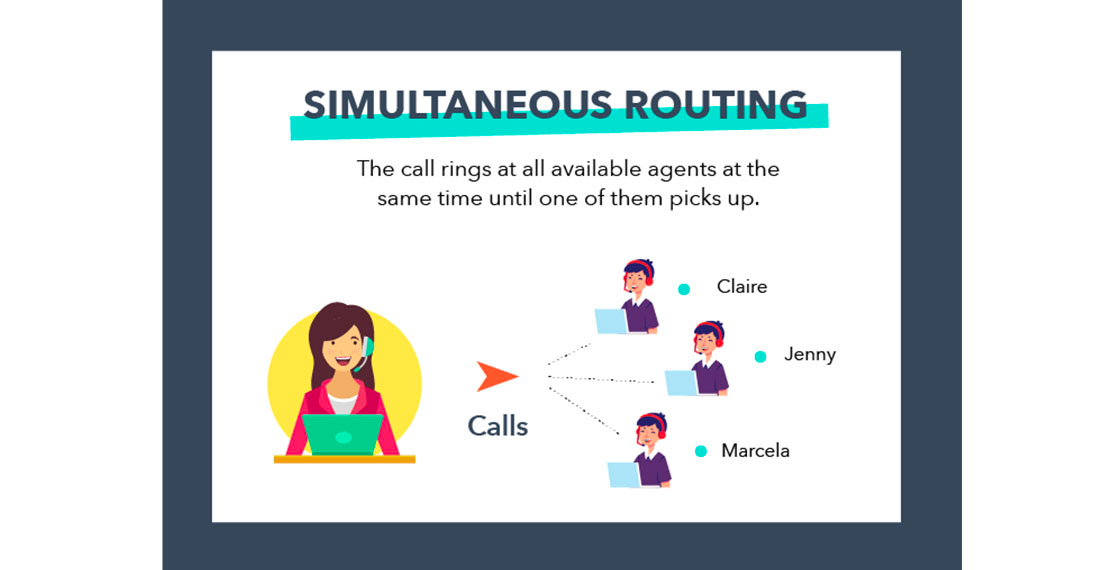
6. Weighted
Calls are routed to agents according to a certain call volume percentage pre-assigned to each. For example, Sally, who is the most experienced in her group, will receive 60% of incoming calls, Bob will receive 30%, and Emma, who just started last week and is still learning, will handle 10%.
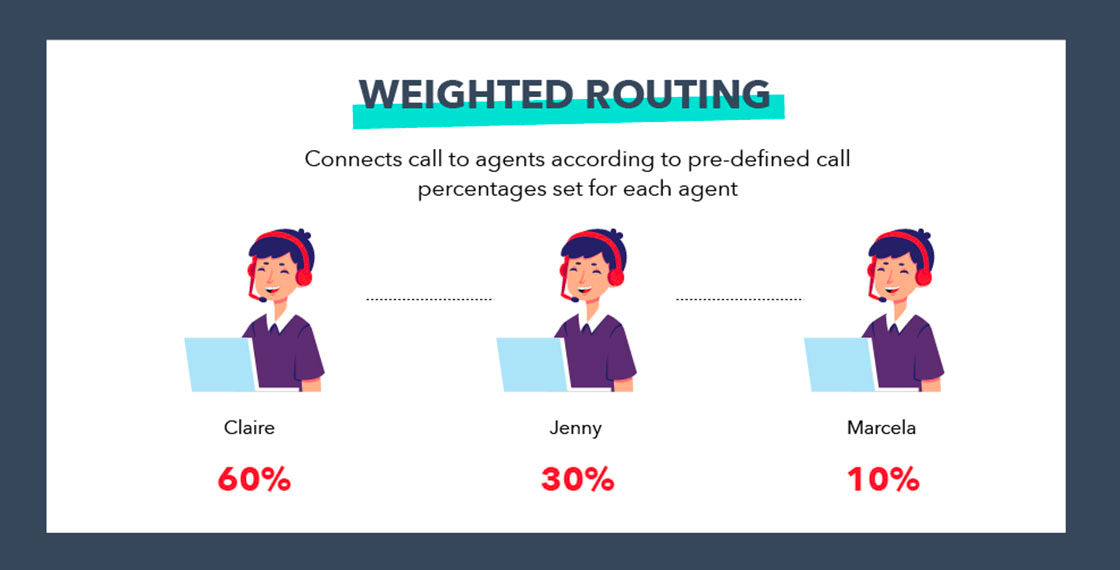
7. Value-based
Also known as "smart routing," this type of routing operates on a higher level of complexity and uses much more detailed information than the others. More geared toward profit generation than time-saving, it involves assessing callers based on such factors as demographics or past history with the company to determine if the caller might be a good candidate for an upgrade or more open to purchase additional products or services.
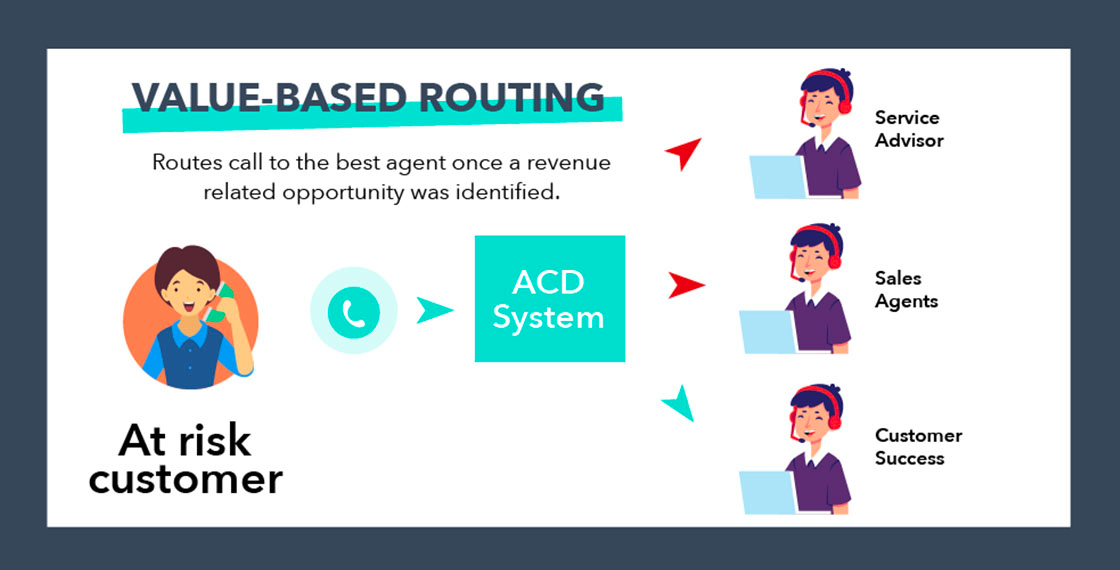
8. Data-based
Similar to value-based routing, this routing uses data on a caller's current status. For example, even though a caller may have called the tech support number, the system may flag their overdue invoice or soon-to-expire membership and route them first to the department for payment processing or subscription renewals.
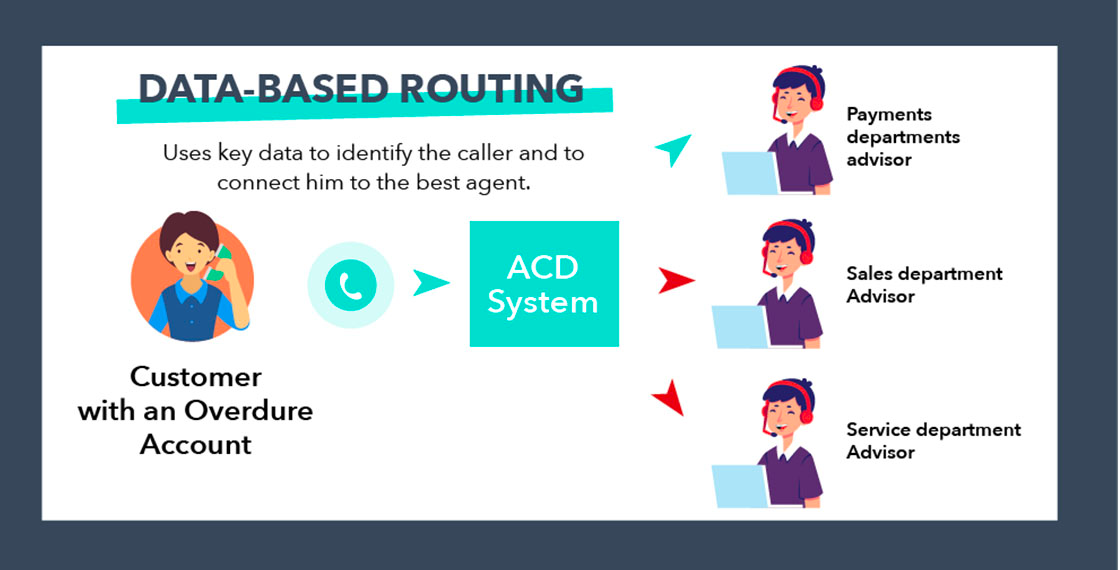
Keep in mind that the above call distribution methods described are just a few examples of the many that exist today. As technology gets smarter and faster and the needs and wants of companies and consumers evolve, some of these will adapt and become even more important, while others may be obsolete within a few years.
What can the Ringover ACD do for you?
Aside from allowing shorter queue times and more direct channels of communication between your clients and the exact person they need to speak with to obtain the solution they're looking for, there are further advantages of implementing Automatic Call Distribution through our solution. Even if you're a start-up with only a few employees, you too can boost performance across all levels with the following features:
- Mobility/flexibility: The world is moving at a faster pace than ever, and it's not stopping anytime soon. Your clients are increasingly on the move, so why shouldn’t you and your team be? Ringover puts all the features of a state-of-the-art corporate phone system at your fingertips whether you're travelling overseas, at home or in the office. Manage your team and connect with collaborators - no matter where you are, and no matter where they are - just as you would in the boardroom and ensure each client call is treated with the prompt attention it deserves.
- Training/coaching: Whispering and call intervention allow supervisors to listen in directly on calls, feeding vital tips and information to struggling agents without the caller being any wiser, or even taking over the call if necessary. Call recording allows newer recruits to listen to their own calls again to identify areas needing improvement or hear veterans handling tough situations.
- Advanced statistics/monitoring: Always know in a glance who's on the line, who's taking a break, and who's available, thanks to our convenient and user-friendly interface. Use such parameters as Average Talk Time (ATT), Average Handle Time (AHT), Average Speed of Answer (ASA) to gain a clear image of exactly where your phone support stands at any given moment. Use this information to identify strong and weak points in your customer service provision, adjust staffing during low and peak call times or hire people as necessary, provide better training to new team members and veterans alike - and ultimately save valuable time and resources.
- CRM Integration: Whether you're using Salesforce or software designed in-house to manage client files, Ringover can link it to your phone activity. You'll then be able to take advantage of such features as automatic file retrieval, so that any agent picking up a call will have instant access to all available information on the caller. Have all call activity automatically sync with your system information - no further need to manually enter the dates and times of conversations, or send clients bouncing around your phone system until they get lucky enough to reach someone able to help them.
- Personalised greetings/music on hold: Establish your company's image instantly for first-time callers and maintain it in the eyes of your most loyal clients with our 100% customisable greetings and music on hold. Select music from our collection or upload it yourself to ensure that it speaks to your brand, adding timely messages and news as desired - all from our user-friendly online studio.
Want to learn how automatic call distribution can help your business?
Contact our experts to help guide you step-by-step at +44 20 7509 6665 or send an email to [email protected]. Start your free trial today.
Published on April 23, 2020.
